Innovative landscape architecture and garden design around the world
From verdant visions to paved paradises, our round up of garden design and landscape architecture will give you a herbal high. Visit these grass-filled zen courtyards and bucolic botanical gardens for ideas from green-fingered designers and architects across the globe – make sure you’re in landscape mode.
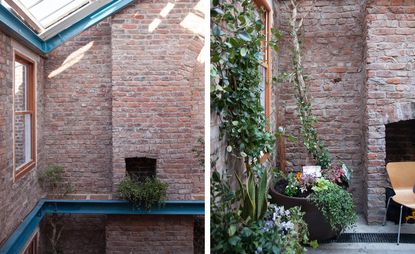
A new community hub has opened its doors on Liverpool’s Cairns Street, by Granby Workshop and Turner Prize winners Assemble. The Granby Winter Garden is a space for contemplation, reinterpreting how we can spend time outdoors in the British climate through planting and architecture. The site was previously a pair of derelict Victorian terraced houses that had fallen into disrepair over the years. Now structurally renewed and braced together, the communal space has been fitted to host artist residences, meetings and events. The indoor garden by Andrea Ku sits at the space’s heart, with triple-height interiors set to accommodate full-height trees in the future.

Piet Oudolf’s herbal Rotterdam haven
Dutch garden designer Piet Oudolf is a leading figure of the ‘New Perennial’ movement, working primarily with perennial plant varieties in landscape design since the 1980s. Oudolf prioritises the lifecycle of a plant over its aesthetic value, which is particularly naturalistic. He looks to structural characteristics of plants to create wildflower meadows that survive year-round, taking inspiration from architectural sensibilities.
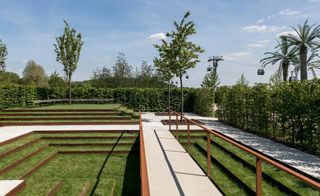
São Paulo-based Hanazaki – who is Brazilian with Japanese ancestry – chose to communicate the complexity of urban life in Brazil through the design of this permanent garden in Berlin. ‘I intentionally diverged from Brazilian stereotypes, such as carnival, football or banana trees and tried to make people have a deeper knowledge of what we have in Brazil. A multicultural, cosmopolitan country, but pairing it with our greatest natural richness, our flora,’ he says. Hanazaki drew from a diverse palette of influences, as well as the history of landscape design in his homeland: ‘Brazil is a country that started to spread its landscape design aesthetics thanks to Roberto Burle Marx. It absorbs different influences because of the great mixture of cultures coming from German, Dutch, Japanese, Italian and many other backgrounds,’ he says.
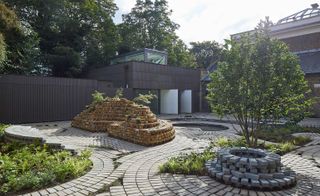
Mexican artist Gabriel Orozco, alongside 6a architects and horticulturists from the Royal Botanic Gardens of Kew, has designed a garden as a permanent art work for the South London Gallery. Orozco is known for his soft watercolour series, his abstract paintings and totemic wooden sculptures, and now it seems, he is adding horticulture to his repertoire. ‘The invitation to create a garden as a permanent art work presented a unique opportunity,’ explains the globetrotting artist of his latest work, the garden design at the South London Gallery.
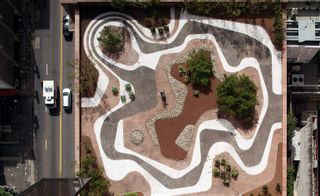
The mineral roof garden at the Banco Safra headquarters in São Paulo designed in 1983 by Roberto Burle Marx, who is credited as one of the 20th century’s most prominent landscape architects.
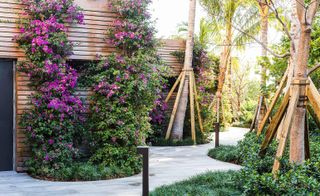
From his first job working on the landscaping of Hawaii’s Sheraton Hotel in the 1990s, Enzo Enea has been refining his craft. So much so that the Swiss-based founder and CEO of Enea Landscape Architecture is, these days, the go-to guy for creating lush green spaces that combine head-turning showmanship with a nuanced eye for balance and intimacy. ‘In a tropical climate like Miami’s where temperatures can exceed 40°C, such a requirement requires careful study to create a micro-climate that would allow the families to really enjoy the outdoors. We were inspired by the idea of indoor and outdoor connectivity, but the view of the water was key. It’s why we changed the position of the cabanas to face the water and open up views by strategically placing trees and palms away from those views.’

Possibly the best place in the world to be delayed for a train, the CoFuFun station plaza at Tenri Station in Japan, designed by Nendo, is an upbeat urban intervention and a new community hub for Tenri City in Nara prefecture. Designed like an over-sized crazy golf range, CoFuFun has a great sense of humour, yet also gets the job done. The 6000 sq m plaza features a series of white circular structures, that serve as multi-functional pavilions hosting a café, shops, information kiosk, bike rental, a play area, an outdoor stage and a meeting area. The orbiting concrete forms are also historically informed, referencing ancient Japanese burial structures ‘cofun,’ common to Nara which can be found dotted around the mountainous area surrounding the city.
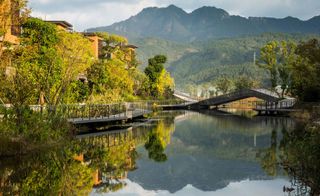
This carefully designed landscape architecture project is the brainchild of American landscape firm SWA Group. Located in Fuzhou, China, the scheme includes a residential complex with leisure, retail and hospitality elements. The Yongtai project is a residential scheme idyllically situated within Fuzhou’s Red Cliff Scenic Area, bordering the Dazhang River in southeast China. Focusing on the landscaping aspect of this complex created for the Fuzhou Yongtai Youxin Real Estate, the project spans a large-scale, 45-hectare area, surrounded by twelve small hills. The area also features a strong water element, as it acts as a watershed for the region.

Australian landscape architecture practice Taylor Cullity Lethlean’s park project in its home country, the National Arboretum in Canberra, was created in collaboration with Tonkin Zulaikha Greer Architects. A sprawling 250-hectare site of 100 single species forests and 100 gardens intertwined, the arboretum is a stunning solution to the need for tree diversity protection and offers facilities that invite human exploration. TCL’s projects oscillate in scale and are a careful balance of sustainability and aesthetics. Its work ranges from masterplans to residential projects and public gardens, such as the spectacular Australia Garden at the Royal Botanical Gardens in Cranbourne, designed in collaboration with Paul Thompson. ‘Our ancient land holds many stories, a number of which are rarely visited by Australia’s population due to the continent’s vast scale,’ says Simone Bliss, senior landscape architect at TCL. ‘We search for the site’s hidden narrative, abstract what we find and apply this process to the community’s needs.’
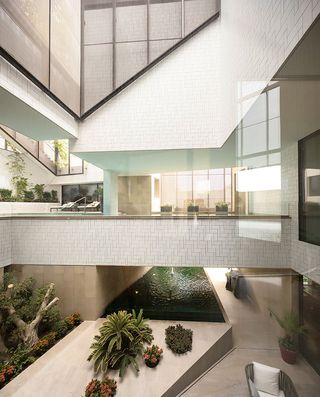
A family came to AGi Architects with the challenge of designing a house that would allow them to live outside 365 days a year, even in the midst of the Kuwaiti summer, when temperatures soar to over 40°C. Architects Joaquín Pérez-Goicoechea and Nasser Abulhasan – principals and founders of AGi – decided to use gardens to solve this request, weaving outdoor living into the fabric of the home while creating three spaces for different activities, times of the day and seasons. They examined the behaviour of the family to define the purposes of the outdoor spaces. The ‘wet garden’ with pool and fountain exists at the core of the house, to be used during the hot season and connecting all the social living spaces together; while the winter garden, a more relaxed and private space, sits up on the roof where a shaded terrace opens up views to the sea. The summer garden is 4m below street level, where a waterfall has a cooling effect, stimulating evapotranspiration to the upper levels of the house.

Haamstede designed by Piet Oudolf
Amongst his larger-scale projects, including decorating The Battery in Manhattan and designing Hauser & Wirth’s rural Somerset farm gallery’s garden, Piet Oudolf also works with private residencies. A family holiday home in Haamstede, constructed by Piet Boon Studio and completed in 2008, features a garden typical of his signature use of perennial species at the rear of the property.

For two thousand years, Hangzhou has been celebrated for its incomparable tableau of unruffled lakes at the foot of green hills, and ancient waterways lined with gardens, temples, and graceful buildings designed by a succession of dynasties enamored with the landscape. All the more reason to applaud David Chipperfield Architects’ latest project in Hangzhou’s western outskirts for its sensitive regard for the city’s historical and botanical nuances. Almost a decade in the making, the Xixi (pronounced ‘see-see’) Wetland Estate is exactly as it sounds – a residential project that’s framed by the leafy, wild setting of Xixi, a bucolic national wetland park of droopy willow trees, long stretches of marshland, and aquatic causeways.

Responding to the brief for a park that would host events and performances and be fully accessible to the disabled, RPBW worked closely with New York-based landscape designer Deborah Nevins and local practice H Pangalou & Associates, planning gridded gardens of local fauna and long connective pathways at the grounds of the Stavros Niarchos Foundation Cultural Centre in Athens. Designed by Renzo Piano Building Workshop (RPBW), the SNFCC rises out of Athens’ suburban coastal landscape at Kallithea like a longstanding landmark. It erases memories of the vacant car park left over from the 2004 Summer Olympics, now a 32m-high artificial hill that might be as old as the Acropolis. It opens up the ‘beautiful view’, which the ancient port of Kallithea was originally named after, making you forget that it had once been obstructed by a busy highway. It is here, in this former void, that activity has since organically thrived at the core of a community in need of normality, space and nature.
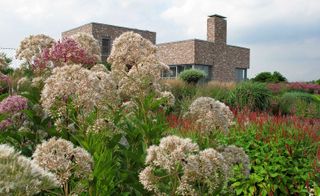
A private garden by Piet Oudolf in the Netherlands
Piet Oudolf’s private garden nursery in Hummelo, a small village in the eastern Netherlands, is the spiritual and physical home of his experimentation with growing and combining plant selections. The garden, adjacent to his family home, has been the birthplace for qualities in his plant breeding that ‘vary from architectural value to [being] simply stronger or pest resistant’. The garden is awash in a dynamic palette, a wildflower meadow lover’s dream.
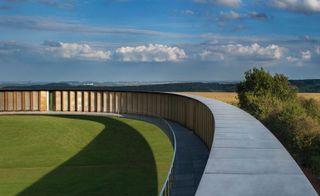
On the site of some of the bloodiest battles in northern France, a First World War memorial at Notre Dame de Lorette is known as colline sanglante or ‘bloody hill’. The area was razed so totally that it is hard to spot a building that predates the 1920s. The €8m international memorial is surrounded by cemeteries and obelisks commemorating the specific nations who fought in the Nord-Pas-de-Calais region. But this new monument is different, aesthetically and symbolically. The Parisian architect Philippe Prost was tasked with designing a structure that would honour all the war dead. His low-rise elliptical structure cast in dark concrete features the names of 579,606 combatants who lost their lives. These names – collated over two years of research – are listed in alphabetical order, with no reference to nationality or rank. On the 2.2 hectare site, by France’s biggest military cemetery, Prost has created a ’Ring of Remembrance’, which he describes as ‘an expression of brotherhood and peace’.

This garden project has had a wide-reaching effect for the improvement of daily life for staff and carers at Royal Stoke Hospital, as well as the faster recovery for patients. The scheme was inspired by evidence that patients follow a faster path of recovery with visual and physical access to green space. Nature continues inside with spaces for breaking out, contemplation and recreation.
Wallpaper* Newsletter
Receive our daily digest of inspiration, escapism and design stories from around the world direct to your inbox
Ellie Stathaki is the Architecture & Environment Director at Wallpaper*. She trained as an architect at the Aristotle University of Thessaloniki in Greece and studied architectural history at the Bartlett in London. Now an established journalist, she has been a member of the Wallpaper* team since 2006, visiting buildings across the globe and interviewing leading architects such as Tadao Ando and Rem Koolhaas. Ellie has also taken part in judging panels, moderated events, curated shows and contributed in books, such as The Contemporary House (Thames & Hudson, 2018), Glenn Sestig Architecture Diary (2020) and House London (2022).
-
 Ikea introduces its first gaming furniture collection
Ikea introduces its first gaming furniture collectionBrännboll is the first Ikea gaming furniture collection, unveiled during Milan Design Week 2024 and designed to swiftly transform a domestic space into a gamer’s paradise
By Jasper Spires Published
-
 Morgan take their classic roadster and give it subtle but significant tweaks for 2024
Morgan take their classic roadster and give it subtle but significant tweaks for 2024New details and features give the compulsive Morgan Plus Four an even more pared back silhouette and driving ability
By Jonathan Bell Published
-
 Wallpaper* Class of '24 exhibition now open at Triennale Milano
Wallpaper* Class of '24 exhibition now open at Triennale MilanoWallpaper* Class of '24 exhibition at Triennale spotlights international emerging talent in furniture and product design, with the support of AHEC and SNOW (until 21 April 2024)
By Rosa Bertoli Published